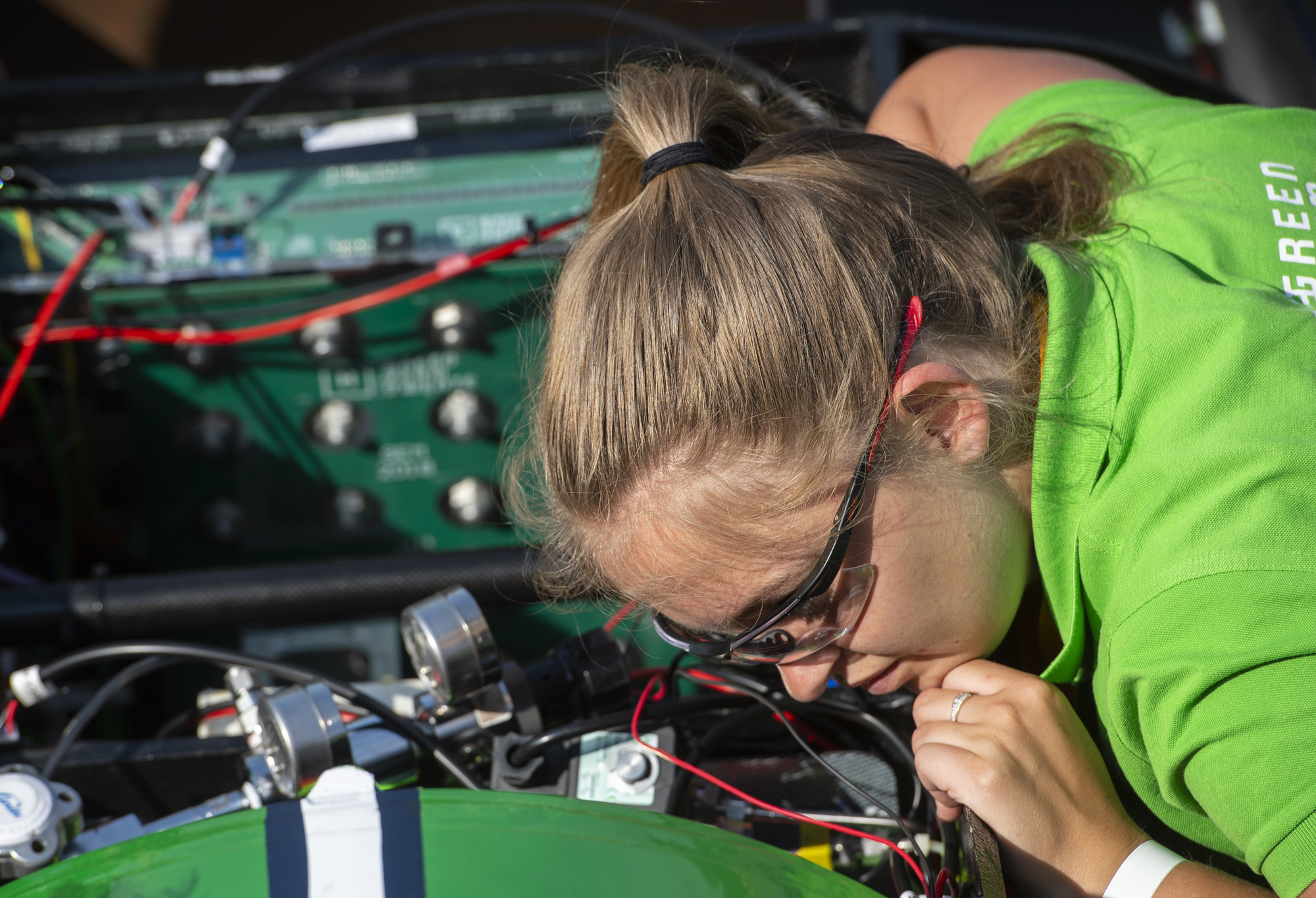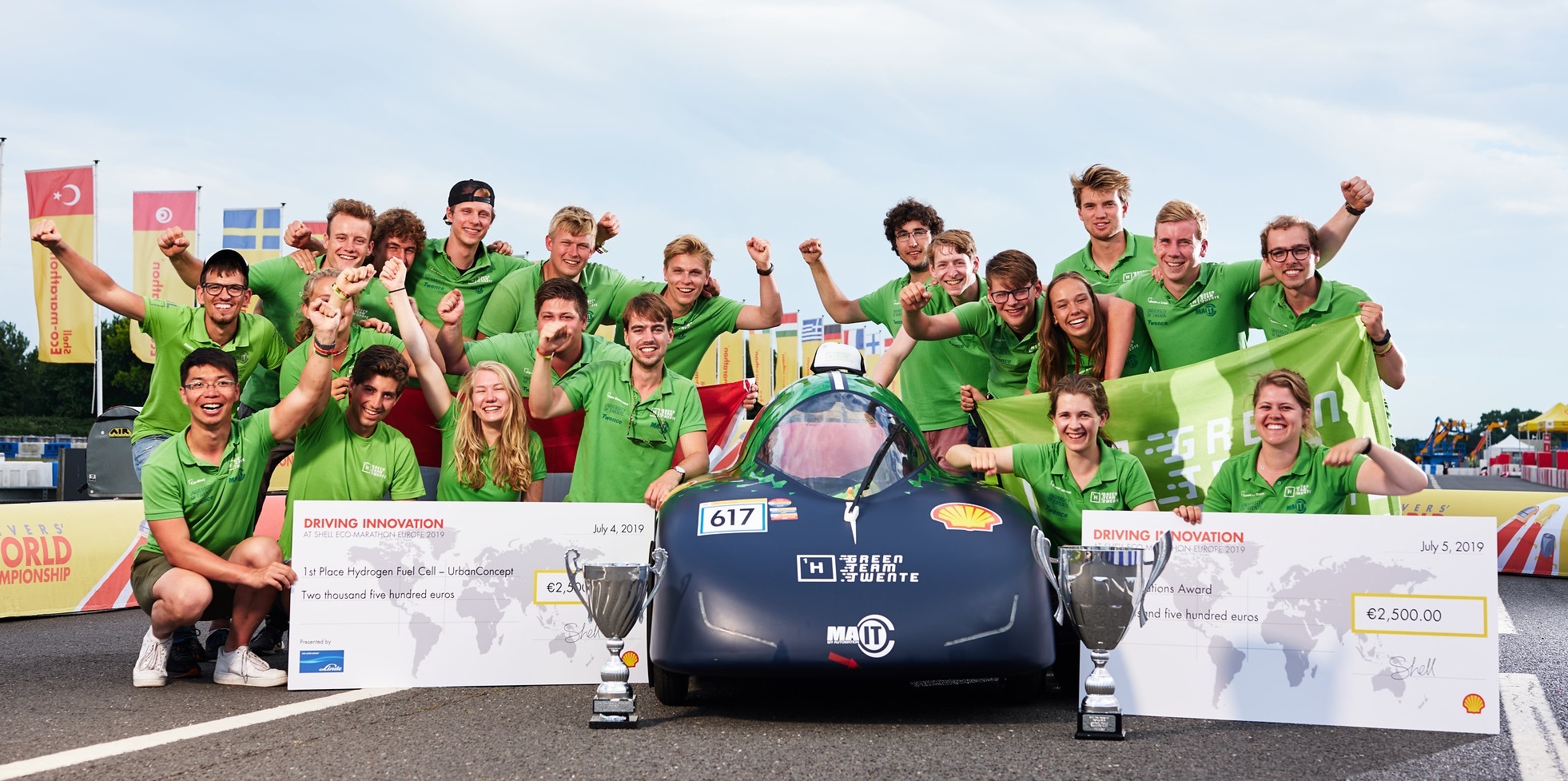Green Team Twente and the Shell Eco Marathon
Green Team Twente is a student team that builds one of the world’s most fuel-efficient hydrogen cars. Each year, we participate in the Shell Eco-Marathon (SEM) Europe. Which is a race between teams from different schools and universities where the most efficient car wins. This year, we did not only win the SEM Europe, but also the Drivers’ World Championship. In this race, teams from all over the world, with different energy type cars, compete to see who can drive the fastest. This means that we had the fastest, most fuel-efficient car of hundreds of teams!
The projects within the team are very different from each other: some focus on the interface between people and the system, and others allow you to work on controlling the hydrogen system or driving the car with high power electronics.

Figure 1: Working on the car
One of the projects from last year combined power electronics and our knowledge about hydrogen systems. This is the DC-DC converter, that is placed between the fuel cell and the energy buffer. At the start of last year, there was a functioning converter. However, as this circuit was bought, it was hard to understand or control what was going on within the system. It was meant for solar panels and not for hydrogen fuel cells.
The new DC-DC converter was designed to control the load on the fuel cell and to match the outcoming power with the energy already in our capstack. The created PCB had three main parts: a microcontroller to communicate with the other systems in the car and the booster controller that accepts settings from the microcontroller and uses that to switch the final part, which is the actual buck-boost circuitry.
Eventually, the systems worked and we were ready for the race. We wanted to win, but we also wanted to play it safe. Since we only had four attempts to drive the required amount of laps on the circuit to show that we were able to drive efficiently, all of the variables that we could change were changed in such a way that the car was the most reliable, which was not the most efficient strategy. After doing this and putting down the first valid attempt, we could get creative and start to push the car to its extremes. This meant that during the few days of the competition, we had to change a lot about the electronics in the car, while not being able to test the new settings before starting a new attempt.

Figure 2: Green Team Twente winning the Shell Eco Marathon
One of these things was changing the voltage of our capacitor bank (capstack) from 48 V to 60 V. Because after the technical inspection we found out that we were allowed to use 60 V, so the whole system had to be adjusted in only one day during the race itself. This was off course quite a challenge, but we got it to work perfectly!
We came across a lot of challenges this year, we did not encounter before. You learn to overcome these while being a little bit creative sometimes. One of the best things about Green Team Twente is that you have access to a team of motivated students, funds to help you make your ideas come to life, and companies who can share the knowledge you need to fill in the final pieces. Which makes that, during the year, you gain a lot of new knowledge and skills while being able to apply them immediately.
